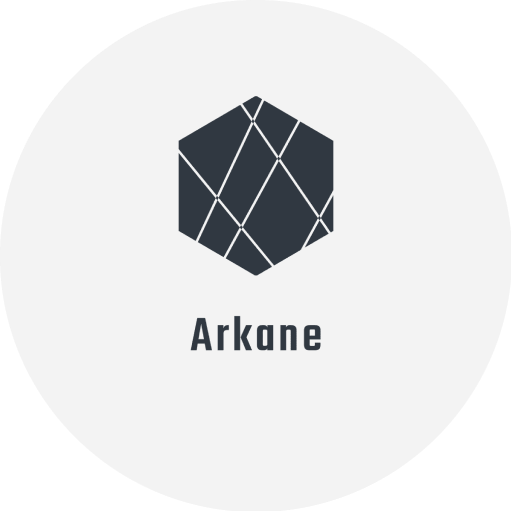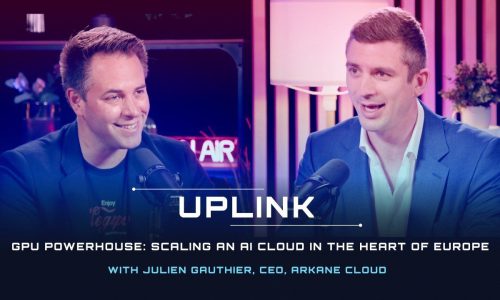
Natural Language Generation (NLG) using Generative Models

Introduction to NLG and Generative Models
The realm of Natural Language Processing (NLP) has become a focal point in the landscape of artificial intelligence (AI), particularly with applications that extend from text generation to sophisticated conversational agents. These advancements have redefined our interaction with machines, allowing for more natural and intuitive communication. NLP divides into two key areas: Natural Language Understanding (NLU), focusing on interpreting human language, and Natural Language Generation (NLG), dedicated to the creation of human-like text by machines.
The genesis of NLG lies in the domain of computational linguistics, which sought to understand and replicate human language principles using computational techniques. NLG, as a distinct field within NLP, is tasked with producing coherent, human-like text across various genres and formats. This includes applications in autocomplete features, where systems predict the next word in a sentence, and in chatbots, which simulate conversations with human users. These chatbots can range from those querying databases to provide information, to more advanced forms that engage in wide-ranging, seemingly sentient conversations.
Generative models in NLG have been transformative, employing sophisticated AI models like Markov processes, Long Short-Term Memory (LSTMs), BERT, and GPT-4. These models have enabled the generation of complex prose, song lyrics, and even computer code, showcasing their versatility and adaptability. The role of generative models in NLG has been pivotal in enabling machines to not only understand but also generate human language in a way that is increasingly seamless and integrated into various aspects of daily life.
The integration of NLG into daily life is becoming increasingly evident. Whether it’s through virtual assistants like Amazon’s Alexa and Apple’s Siri, which utilize NLP to understand and respond to user queries, or through advanced applications like Google’s LaMDA, which offers human-like conversational capabilities, the impact of NLG is profound. These systems, while increasingly sophisticated, continue to evolve, facing challenges such as bias, incoherence, and erratic behaviors. Despite these hurdles, the field of NLG, buoyed by generative models, continues to offer significant opportunities for further advancement and application across various sectors.
Evolution of Language Models
The journey of Natural Language Processing (NLP) and, by extension, language models has been a remarkable tale of innovation and advancement. It started with Alan Turing’s proposition in 1950 of a “thinking” machine, capable of emulating human conversation indistinguishably. This theoretical groundwork laid the foundation for NLP, AI, and the development of computers as we know them today.
Historical Perspective
In the initial phases, NLP relied on simple models like the Bag-of-Words, which tallied word occurrences in documents. However, the complexity of real-world applications necessitated more sophisticated methods. TF-IDF (Term Frequency-Inverse Document Frequency) evolved to address the limitations of Bag-of-Words by filtering out common “stop words” and placing greater emphasis on unique terms. Subsequently, the development of Word2Vec introduced prediction-based modeling, revolutionizing NLP with strategies like Skip Gram and Continuous Bag of Words.
The Role of Neural Networks in Modern LLMs
The introduction of ELMo (Embeddings from Language Models) represented a significant leap forward. ELMo tackled the challenge of word representation homonyms — words with the same spelling but different meanings — using context. This was followed by the transformative Transformer models, which introduced encoders and decoders to enhance training efficiency and outperform existing translation models.
BERT (Bidirectional Encoder Representations from Transformers) further advanced the field in 2018. By leveraging encoder representations, BERT set new benchmarks in language processing, leading to its widespread adoption in search engines and other applications by 2020. XLNet, another milestone developed by Google and Carnegie Mellon researchers, expanded upon BERT’s capabilities, claiming superior performance in various tasks.
The introduction of GPT-3 (Generative Pre-trained Transformer 3) in mid-2020 marked a new era with its unprecedented 175 billion machine learning parameters, showcasing remarkable proficiency in language understanding and generation tasks. Following this trend, Meta released the Open pre-trained transformer (OPT) and later, the language model ‘Atlas’, focusing on question-answering and fact-checking tasks, demonstrating the relentless pursuit of innovation in language models.
The evolution of language models has been driven by a quest for better understanding, representation, and generation of human language. From basic statistical models to sophisticated neural network-based architectures, each development has progressively enhanced the ability of machines to process and generate natural language, mirroring the complexities of human communication.
Generative Models in NLG: An Overview
In recent years, the landscape of natural language generation (NLG) has been significantly reshaped by the integration of generative models, particularly those powered by deep neural networks. The core challenge for researchers in this area has been to develop generative models that effectively fulfill diverse language generation tasks across various application scenarios.
One significant advancement in this area has been the development of Generative Adversarial Networks (GANs) for text generation. The traditional approach to GANs involved training the discriminator to classify texts as either human-written or machine-generated. However, this method encountered limitations in generating high-quality language descriptions. To address this, the concept of a ranking-based generative adversarial network, RankGAN, was proposed. RankGAN differs by analyzing and ranking a collection of human-written and machine-written sentences, using relative ranking scores to evaluate their quality. This approach allows the discriminator to make more nuanced assessments, which in turn enhances the generator’s ability to produce more coherent and contextually appropriate texts.
Moreover, the application of generative models extends beyond mere text generation. For instance, in image captioning, generative models have been employed to produce captions that are not only accurate in describing an image but also exhibit diversity across different images. By ranking human-written captions against image-mismatched captions within a joint space, the models effectively utilize the inherent characteristics of human languages to generate more varied and nuanced descriptions.
Another area of focus has been text style transfer and the generation of textual adversarial examples. Traditional rule-based editing methods for these tasks often lacked context sensitivity, leading to less fluent and grammatically inconsistent outputs. Recent generative models have adopted a contextualized perturbation approach, which allows for the generation of adversaries that are more grammatically sound and contextually relevant. These models have shown higher success rates in generating textual adversaries that are both fluent and stylistically diverse.
In summary, generative models in NLG are not just about creating text; they are about crafting language that is contextually appropriate, stylistically diverse, and semantically rich. The ongoing advancements in this field promise to further enhance the capabilities of NLG systems, making them more adept at handling a wide array of language generation tasks with greater accuracy and creativity.
Key Components of Generative Models for NLG
Generative models in Natural Language Generation (NLG) are complex systems that rely on several key components to produce human-like text. Understanding these components is crucial to appreciate how these models learn and operate.
Data Preprocessing
The first step in the development of an NLG model is data preprocessing. High-quality, well-structured data is essential for effective training. Preprocessing involves cleaning and transforming the data to make it suitable for the machine learning algorithms that power the model. This includes tokenization, stemming, lemmatization, and other techniques to enhance the quality of the input data. This stage ensures that the input data is in a form that the generative models can efficiently process.
Training Data Selection
A pivotal component in the development of NLG models is the selection of appropriate training data. The data must be diverse and representative to enable the algorithms to generalize patterns and produce accurate, contextually relevant text. Annotated datasets, which pair human-generated text with corresponding input data, are particularly valuable for training purposes. These datasets allow the model to understand the nuances of language and improve its ability to generate coherent text.
Feature Extraction
Feature extraction is the process of transforming raw data into a format suitable for machine learning algorithms. In NLG, features can include syntactic structures, semantic relationships, sentiment analysis, and topic modeling. These features are crucial for generating coherent and contextually appropriate text, capturing the essential information required for the task at hand.
Model Selection and Training
The selection and training of the machine learning model are central to NLG. Various algorithms can be used, including sequence-to-sequence models, recurrent neural networks (RNNs), transformers, and deep learning architectures. The training process involves optimizing the model’s parameters to map input data to the desired output text effectively. Techniques like backpropagation and gradient descent are used in this optimization process.
Fine-Tuning for Specific Tasks
Fine-tuning is a process where language models are customized for specific tasks using small to medium-sized supplemental training sets. This process is essential for tailoring the generative model to specific applications, whether it’s text generation, sentiment analysis, or another language-related task. Fine-tuning allows the model to specialize in a particular area, enhancing its performance and accuracy for specific types of language generation.
Training Large Language Models
Training large language models (LLMs) requires a substantial corpus of text, which could include sources like the 1B Word Benchmark, Wikipedia, and the Common Crawl dataset. These models, due to their large number of parameters, require significant computational resources and careful handling of data quality issues such as copyright infringement and “garbage” data.
The development of effective NLG systems involves a meticulous process of preparing data, selecting the right models, and fine-tuning them for specific tasks. Each component plays a crucial role in ensuring that the final model can generate text that is not only coherent but also contextually and stylistically appropriate.
Applications of NLG in Various Domains
Natural Language Generation (NLG) has a broad range of applications across various industries, significantly enhancing efficiency and effectiveness in communication and data interpretation.
Analytics Reporting
In the realm of analytics reporting, NLG plays a pivotal role. Businesses across industries use NLG-powered Business Intelligence solutions to analyze data and transform it into accessible reports. This application is particularly valuable in converting complex data charts and graphs into clear, natural-language insights, aiding business leaders in making informed decisions efficiently.
Content Automation
NLG technology has revolutionized content automation. It enables the creation of personalized content by sequencing long phrases, which finds applications in internal communications, product descriptions, agreements, company reports, contracts, and more. This automation not only reduces the turnaround time for report writing but also ensures standardization and improved accuracy in textual communication.
Virtual Assistants & Chatbots
Virtual assistants and chatbots represent one of the most prominent applications of NLG. Technologies like Alexa, Cortana, Siri, and Google Assistant use AI and NLG to comprehend user queries, process data, and deliver accurate responses. In customer service, NLG combined with Natural Language Processing (NLP) streamlines customer interactions by providing personalized and accurate responses to inquiries and complaints.
Finance & Banking
In finance and banking, NLG systems are invaluable for automating performance reports and profit and loss statements. The technology also supports fintech chatbots that offer personalized financial management advice, enhancing customer engagement and experience in the banking sector.
Manufacturing
With the increasing use of IoT applications in manufacturing, a large amount of data is generated that can be leveraged to optimize performance. NLG technologies are employed to automate the communication of critical data like IoT device status and maintenance reports, enabling quicker and more efficient decision-making by employees.
These applications demonstrate the versatility and transformative impact of NLG across sectors, streamlining processes, enhancing communication, and driving data-driven decision-making.
Newsletter
You Do Not Want to Miss Out!
Step into the Future of Model Deployment. Join Us and Stay Ahead of the Curve!

![The 4 Major Corporate Fears About AI [and How Arkane Crushes Them]](https://arkanecloud.com/wp-content/uploads/elementor/thumbs/image-fears-r83x02fmwkg0873grkx2f5jvdsy2k1b00h5jqz1vi0.png)



